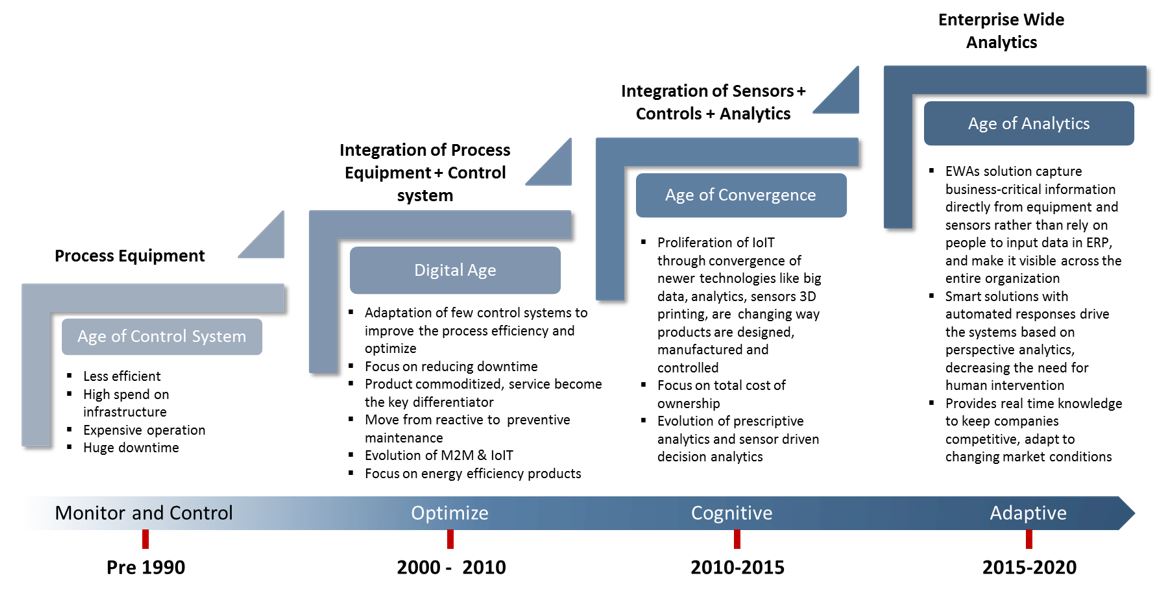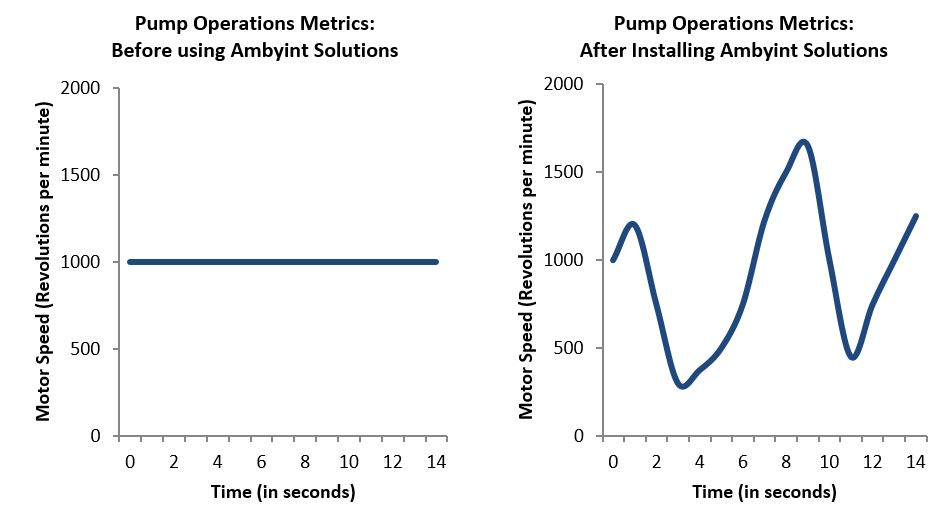Written by Anand M Gnanamoorthy
The oil and gas industry continues to face turmoil. After a recovering to above $60 per barrel, the Europe Brent crude oil price is back below $50. The CBOE Crude Oil Volatility Index, a key indicator of market expectations and popularly known as Oil Vix, is hovering around 40. Last year, when the crude prices stayed above $100, the Oil Vix was well below 25.
“In the new era of low oil price, it is pertinent that oil and gas operators are able to contain cost of operations”, opines Nav Dhunay, CEO of Ambyint. “Analytics could help oil and gas companies improve efficiency by 10% to 15%.” Nav and many other enterprising entrepreneurs have started using technology to solve challenges in oil and gas. Analytics is one area forward-thinking oil and gas companies are looking at as they seek to improve how they operate their businesses and deliver their capital projects. In the next few years, more and more companies will be deploying predictive analytics to optimize every facet of their enterprise.
Doing more with less and crystal ball gazing
As the oil price falls, there is an acute need to reduce operational cost. Oil and gas end-users are thus finding better ways to manage their assets. Pump jack and ESPs form the majority of solutions used in the oil and gas. It is paramount to ensure that they are working efficiently and, currently, maintenance personnel have to regularly visit all the pumps to ensure they are properly serviced and running. While they are visiting a perfectly working pump, some other pump might fail. This increases labor costs and leads to increased equipment downtime.
Up to now, there has been no way to predict when and how a particular pump is going to fail. A better understanding of when a given pump might fail will allow maintenance personnel to ensure they are addressing the critical issues to drive pump uptime. Lacking crystal ball to gaze into the failure timescale of a pump, this issue continues to plague the industry. There is a long held belief that every well is different, exacerbated by the different types of pumps, with no two pumps experiencing exactly the same set of operating conditions. Hence, predicting how a well and the associated pump will perform has been considered impossible. “That’s were years of analysis comes into play” quips Dhunay. “We do not think every well is unique. We consider that there are finite set of wells and based on the data collected, we can predict the how a well is expected to perform. Based on combination of various factors we can predict when the pump is expected to fail. This helps drive equipment uptime and end-users save on labor cost.” For example, analytical systems optimize ESP’s pumping speed to enable the highest production. Based on the proprietary algorithm, these systems enable reduced mechanical loadings and higher efficiency leading over 30% reduction in energy cost. The following chart shows the effectiveness of using these systems.
Note: SPM – Strokes per minute; Source: Ambyint
Prescriptive analytics can be used in other areas of oil and gas production. In both traditional and unconventional wells, by using data from pumps, production, completion, and subsurface characteristics, one can predict failures of electric submersible pumps and prescribe actions to mitigate production loss. A variety of end-users are using analytics to predict failures in pumps that pull oil out from subsurface and preempt the associated production loss from these pump failures.
Another potential application of prescriptive analytics is the possible prediction of corrosion development or cracks in pipelines and prescribe preventive and preemptive actions, by analyzing video data from cameras along with other data from robotic devices called “smart pigs” inside these pipelines.
The Evolution of Analytics in Process Equipment Ecosystem

M2M – Machine to machine; IoIT – Internet of Industrial Things Source: Frost & Sullivan
The next stage of evolution focuses on moving from prescriptive analytics to enterprise wide analytics. The need to monitor equipment in real time, with the ability to control the equipment to ensure productivity and safety, are propelling adoption in oil and gas. There are multiple challenges in implementation. Not just that the technology adoption in process equipment (especially pumps) is slow; in addition, the fragmented vendor landscape and lack of unified standards is affecting implementation. Evolution of a unified standard is essential to success. Security always seems to be an after-thought in industrial applications. Given the recent cyber-attacks, both individual and state sponsored, it is critical to build a secure and robust infrastructure. Finally, the aging workforce and talent crunch may bottleneck the adoption curve.
There has been much progress on developing new technologies and enterprising entrepreneurs are finding new solutions to solve tomorrow’s problem. Dhunay aptly summed it up, saying “Pumps are entering the age of analytics. Buzzwords are changing constantly. In the next few years, there will be several revolutionary ideas and it is very exciting to be on cusp of change.”





